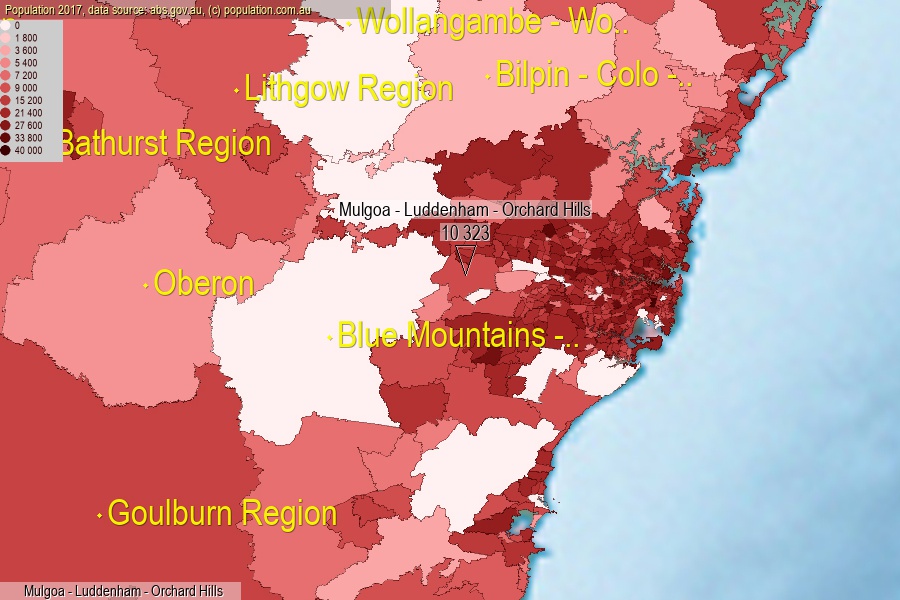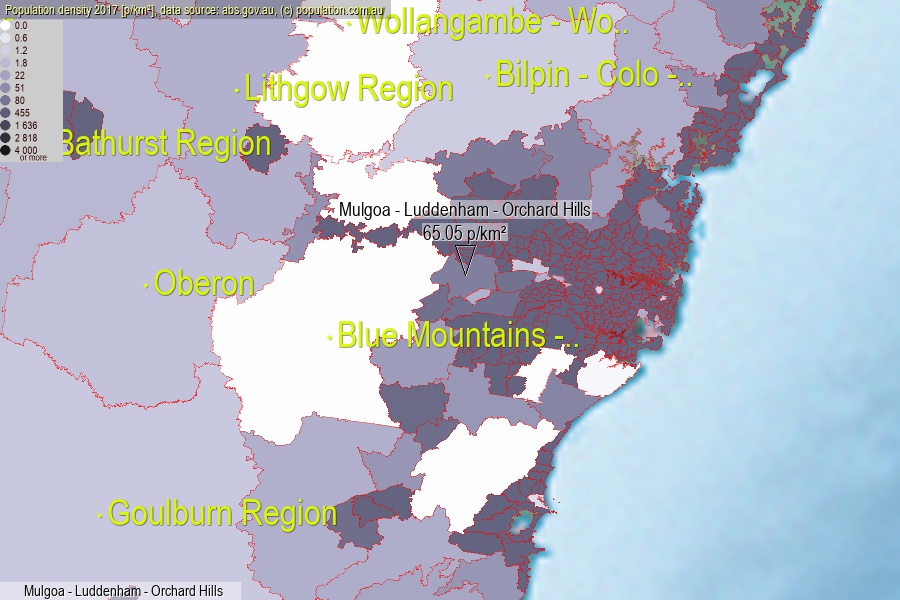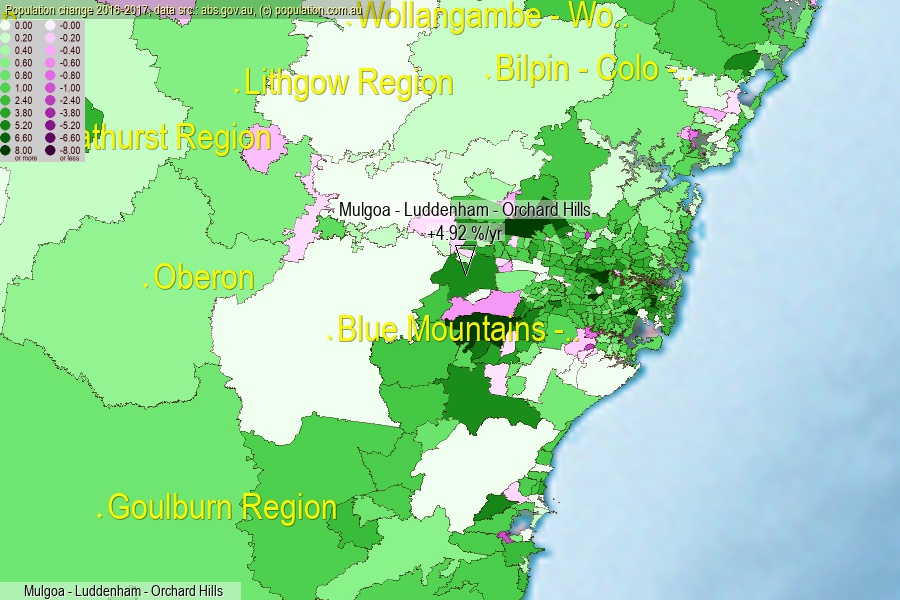 population.com.au
population.com.auLast official estimated population of Mulgoa - Luddenham - Orchard Hills (as Statistical Area Level 2) was 10 323 people (on 2017-06-30)[2]. This was 0.04% of total Australian population and 0.13% of NSW population. Area of Mulgoa - Luddenham - Orchard Hills is 158.70 km², in this year population density was 65.05 p/km² . If population growth rate would be same as in period 2016-2017 (+4.92%/yr), Mulgoa - Luddenham - Orchard Hills population in 2025 would be 15 158. [0]



Click to enlarge. Mulgoa - Luddenham - Orchard Hills is located in the center of the images.
Population [people], population density [p./km²] and population change [%/year] [2]
View borders » (new window) [4]
[1991-1992] -0.64 %/Yr.
[1992-1993] -1.00 %/Yr.
[1993-1994] -0.29 %/Yr.
[1994-1995] +6.20 %/Yr.
[1995-1996] +4.12 %/Yr.
[1996-1997] +1.71 %/Yr.
[1997-1998] +1.41 %/Yr.
[1998-1999] +0.20 %/Yr.
[1999-2000] +0.92 %/Yr.
[2000-2001] -1.36 %/Yr.
[2001-2002] +2.34 %/Yr.
[2002-2003] +1.43 %/Yr.
[2003-2004] +0.11 %/Yr.
[2004-2005] +0.99 %/Yr.
[2005-2006] +1.47 %/Yr.
[2006-2007] +0.79 %/Yr.
[2007-2008] +1.25 %/Yr.
[2008-2009] +0.91 %/Yr.
[2009-2010] +0.71 %/Yr.
[2010-2011] +1.28 %/Yr.
[2011-2012] +8.99 %/Yr.
[2012-2013] +9.90 %/Yr.
[2013-2014] +7.83 %/Yr.
[2014-2015] +7.73 %/Yr.
[2015-2016] +6.29 %/Yr.
[2016-2017] +4.92 %/Yr.
[0] Calculated with linear interpolation from officially estimated population
[1] Read more about SA2 and Australian Statistical Geography Standard (ASGS) on abs.gov.au
[2] Population data from Australian Bureau of Statistics (Population and density: 2017; change: 2016-2017)
[3] Digital Boundaries: Australian Statistical Geography Standard (ASGS) 2016.
[4] Border coordinates are simplifyed using Ramer-Douglas-Peucker algorithm.